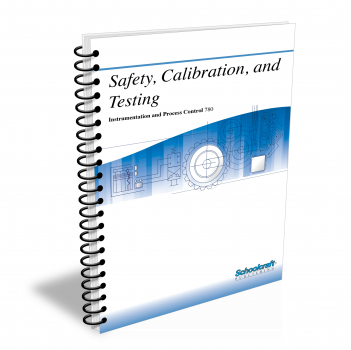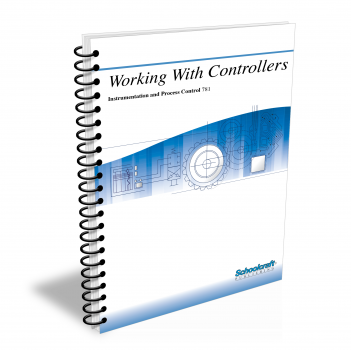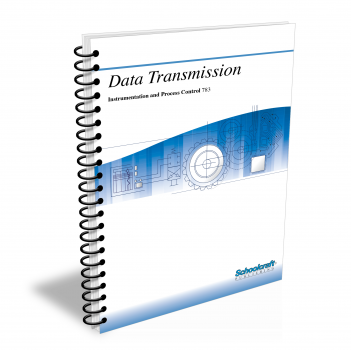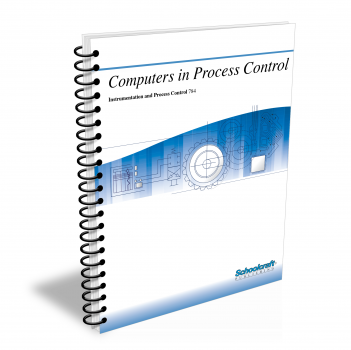How Control Loops Operate
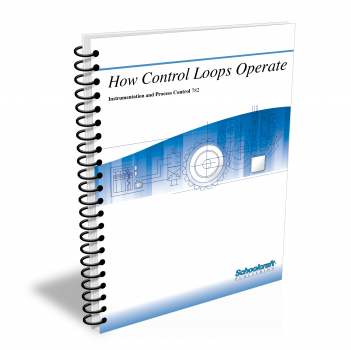
Course Number: 782
The How Control Loops Operate textbook builds on the Working with Controllers textbook, but can be used independently. It defines control loop terms and characteristics and gives specific examples of operation of control loops of many kinds. It discusses proportional, integral, and derivative modes in detail. It compares several kinds of digital control systems and describes advanced control methods by means of four strategies with specific examples. The textbook examines the effects of loop dynamics on system stability and discusses loop safety features in detail.
Does your curriculum require additional topics not included in this textbook? Build a customized version of the How Control Loops Operate textbook below.
Recommended Contact Hours – 11
Preview a Chapter
Available Supporting Material
- Table of Contents
- Exam Copies
- Suggested Titles
Table of Contents
Chapter 1: Fundamentals of Control Loops
Topics: Definitions; Process sensors; Sensor characteristics; Controllers; Recorders; Signal conditioners; Final control elements
Learning Objectives:
- Explain the difference between an open loop and a closed loop.
- Define error, feedback, disturbance, and feedforward control.
- List several kinds of process sensors and describe the operation of each.
- Explain how accuracy, resolution, sensitivity, linearity, and step response affect sensor operation.
- Describe the functions of process controllers, recorders, signal conditioners, and final control elements.
- Explain the basic operation of a typical control loop.
Chapter 2: Control Loop Characteristics
Topics: Two-position and floating control; Proportional, integral, derivative, and PID mode; Supervisory control; DDC; DCS
Learning Objectives:
- Describe the difference between continuous and discontinuous control modes and give an example of each.
- Describe the action of the various continuous control modes.
- Define proportional band, reset time, and rate time.
- Discuss the advantages of each of the combination control modes.
- Name several advantages of digital controllers.
- Discuss the differences between supervisory control, direct digital control, and distributed control systems.
Chapter 3: Advanced Control Methods
Topics: Cascade and ratio control system; Feedforward control; Ratio control in a secondary loop; Multivariable control systems
Learning Objectives:
- Describe how a cascade control system works.
- Identify the primary and secondary variables in a cascade loop.
- Compare feedforward and feedback control.
- Identify dependent and independent variables in ratio control.
- Explain the advantage of having a secondary control loop in ratio control.
- Describe how a multivariable control system works and define interaction.
Chapter 4: Loop Dynamics
Topics: Effects of process time lag; Dead time compensation; System stability; Transient response; Gain; Phase shift
Learning Objectives:
- Describe two kinds of process time lags and give an example of each.
- Discuss the effects of capacitance and resistance on loop dynamics.
- State the three main objectives of a well-designed process control system.
- Describe how PI, PD, and PID controllers are adjusted to achieve optimum response.
- Discuss the effects of system gain and phase shift on system stability.
Chapter 5: Loop Protection
Topics: Explosion-proof enclosures; Intrinsically safe instrument systems; Fail-safe mechanisms; Hard and soft constraints; Alarms
Learning Objectives:
- Discuss the classification of hazardous locations as identified in the NEC Handbook.
- Define volatility and flash point, and explain the purpose of a purged enclosure.
- Describe two kinds of explosion-proof enclosures.
- Discuss ways of making a system intrinsically safe.
- Describe examples of fail-safe mechanisms, and differentiate between hard and soft constraints.
- Compare latching and nonlatching alarm systems, and explain the function of annunciators.
- Discuss the purpose and operation of interlocked and sequential control.
Chapter 6: Process Control Symbols and Drawings
Topics: Symbol recognition; Piping and instrument drawing; Location and installation drawing; Loop and wiring diagram
Learning Objectives:
- Recognize standard symbols used in process control diagrams.
- Describe a process control system through the use of instrument symbols.
- Recognize and use four kinds of process control diagrams.
Chapter 7: Flowcharts and Electrical Diagrams
Topics: Sequence of operation; Flowchart; Switches; Relays; Electrical elementary diagram; Pump system schematic; PLC diagram; Symbols
Learning Objectives:
- Convert sequence-of-operation text to a flowchart.
- Read electrical and electronic control diagrams and drawings.
- Recognize symbols used on electrical and electronic diagrams, including those for PLCs and SAMA logic.
- Convert electrical diagrams to PLC diagrams.
Request Exam Copies
Exam Copies
Ready to see a copy of our textbooks? After selecting which textbooks you’d like to review for your course, you can submit your request by either logging in or creating an account so we know where to ship your exam copies. A representative from Schoolcraft will contact you to confirm and finish processing your request.
Exam copies are always free and yours to keep.
Selected Exam Copies
none selected
* Maximum of five copies can be ordered
